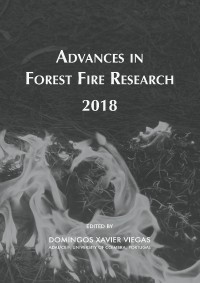Please use this identifier to cite or link to this item:
https://hdl.handle.net/10316.2/44610| Title: | Terpene-containing species vs terpeneless species: what best drives flammability of ornamental species used in WUI? | Authors: | Ganteaume, Anne Romero, Bastien |
Keywords: | WUI;leaf flammability;terpenes;ornamental vegetation;Pinus halepensis | Issue Date: | 2018 | Publisher: | Imprensa da Universidade de Coimbra | Journal: | http://hdl.handle.net/10316.2/44517 | Abstract: | In wildland-urban interfaces (WUI), the vegetation surrounding housing can be an efficient vector of fire propagation towards buildings possibly resulting in extensive damage. The current work aimed at highlighting the most flammable species in WUI and the driving factors of their leaf flammability among a set of leaf characteristics including terpene content supposed to enhance plant flammability. This hypothesis needed to be clarified and the role of the three main classes (mono-, sesqui-, and diterpenes) determined in the species that contained such molecules. After the screening of the live leaf terpene contents in 16 of the most common species in WUI of SE France, only five presented terpenes: Pinus halepensis, Cupressus arizonica, C. sempervirens, Cupressocyparis leylandii, and Thuja occidentalis. Burning experiments provided data allowing the species to be ranked from the most to the least flammable. P. halepensis belonged to the most flammable species contrary to the four others. Relationships between flammability and leaf characteristics (terpene contents, leaf thickness, surface-to-volume ratio, mass-to-volume ratio, and FMC) were tested to highlight the most significant flammability drivers. Except for ignition frequency hindered by diterpene content, the flammability of species containing terpenes was mostly driven by sesquiterpene content (positive effect), sometimes combined to other leaf characteristics; P. halepensis best characterized these relationships. Leaf thickness best predicted flammability of the terpeneless species (negative effect) but when all species were pooled, sesquiterpene content was still one of the best predictors. P. halepensis containing the highest amount of sesquiterpenes and being among the most flammable species should be avoided in WUI, along with species with low FMC and leaf density. The other species presenting high monoterpene and diterpene contents were characterized by less flammable thick and dense leaves; however, the amount of dead fuel trapped in the canopy of Cupressus sempervirens strongly increases its flammability and should also be avoided near housing. | URI: | https://hdl.handle.net/10316.2/44610 | ISBN: | 978-989-26-16-506 (PDF) | DOI: | 10.14195/978-989-26-16-506_93 | Rights: | open access |
| Appears in Collections: | Advances in forest fire research 2018 |
Files in This Item:
| File | Description | Size | Format | |
|---|---|---|---|---|
| terpene-containing_species_vs_terpeneless_species.pdf | 712.8 kB | Adobe PDF |  |
Items in DSpace are protected by copyright, with all rights reserved, unless otherwise indicated.
